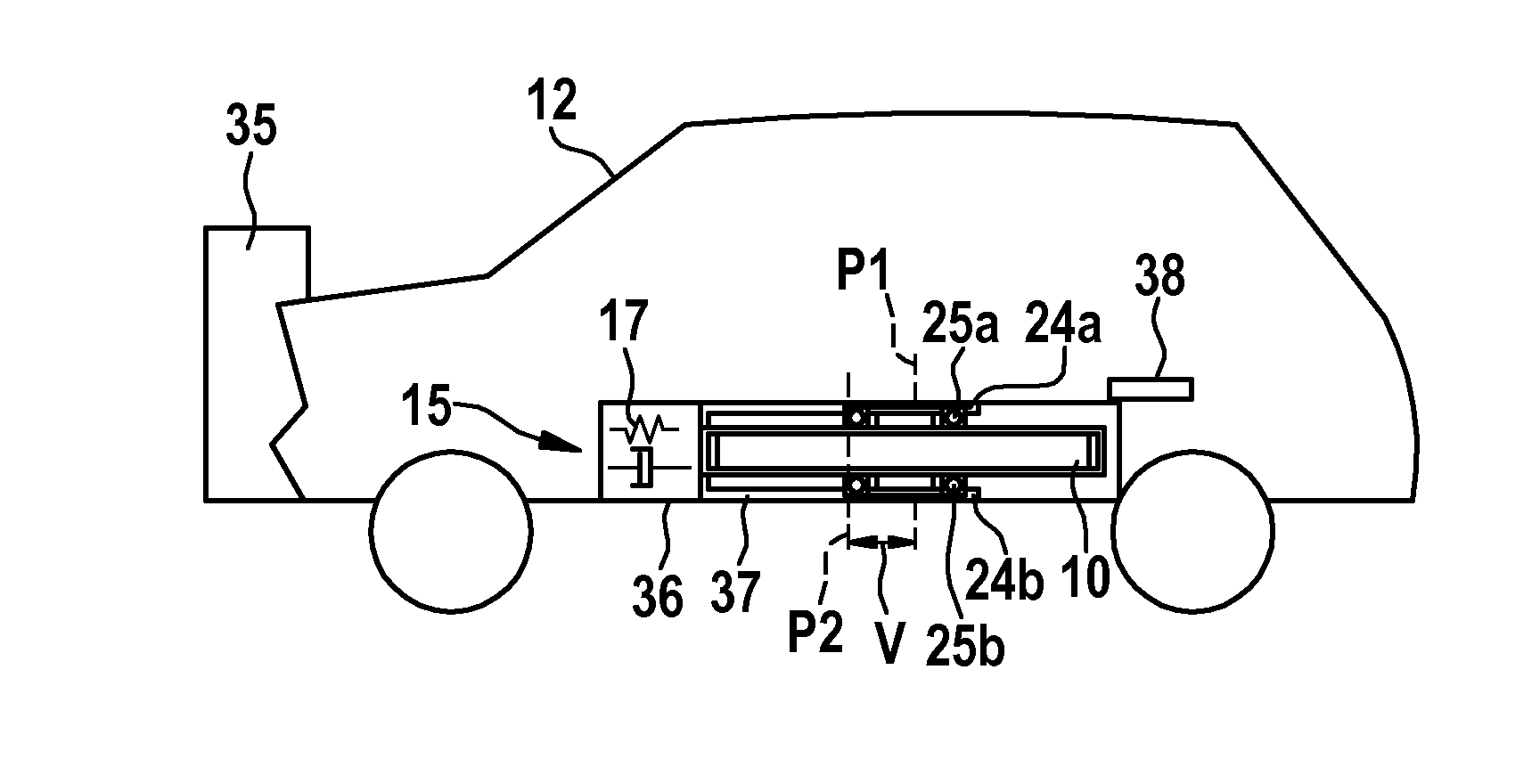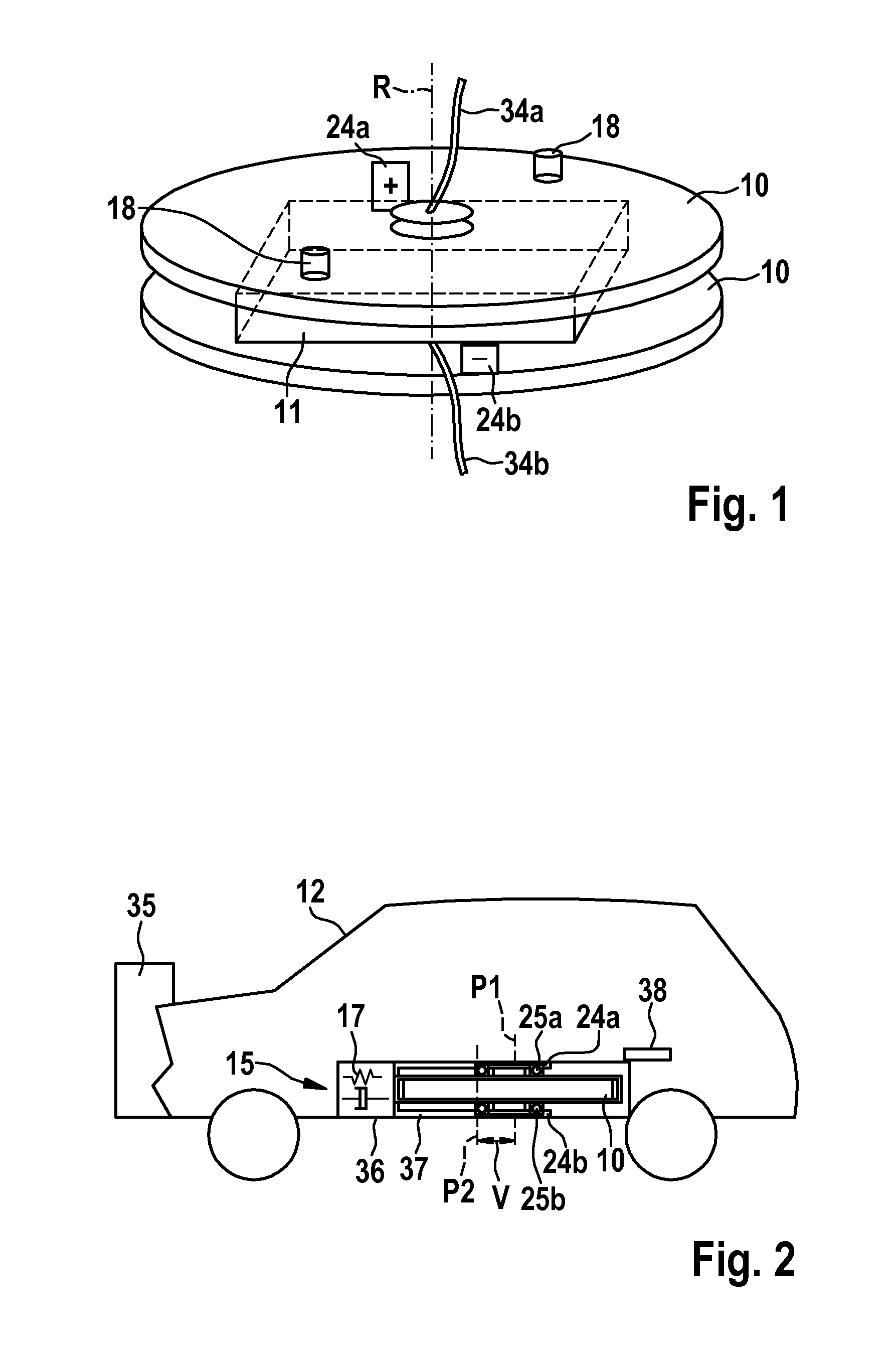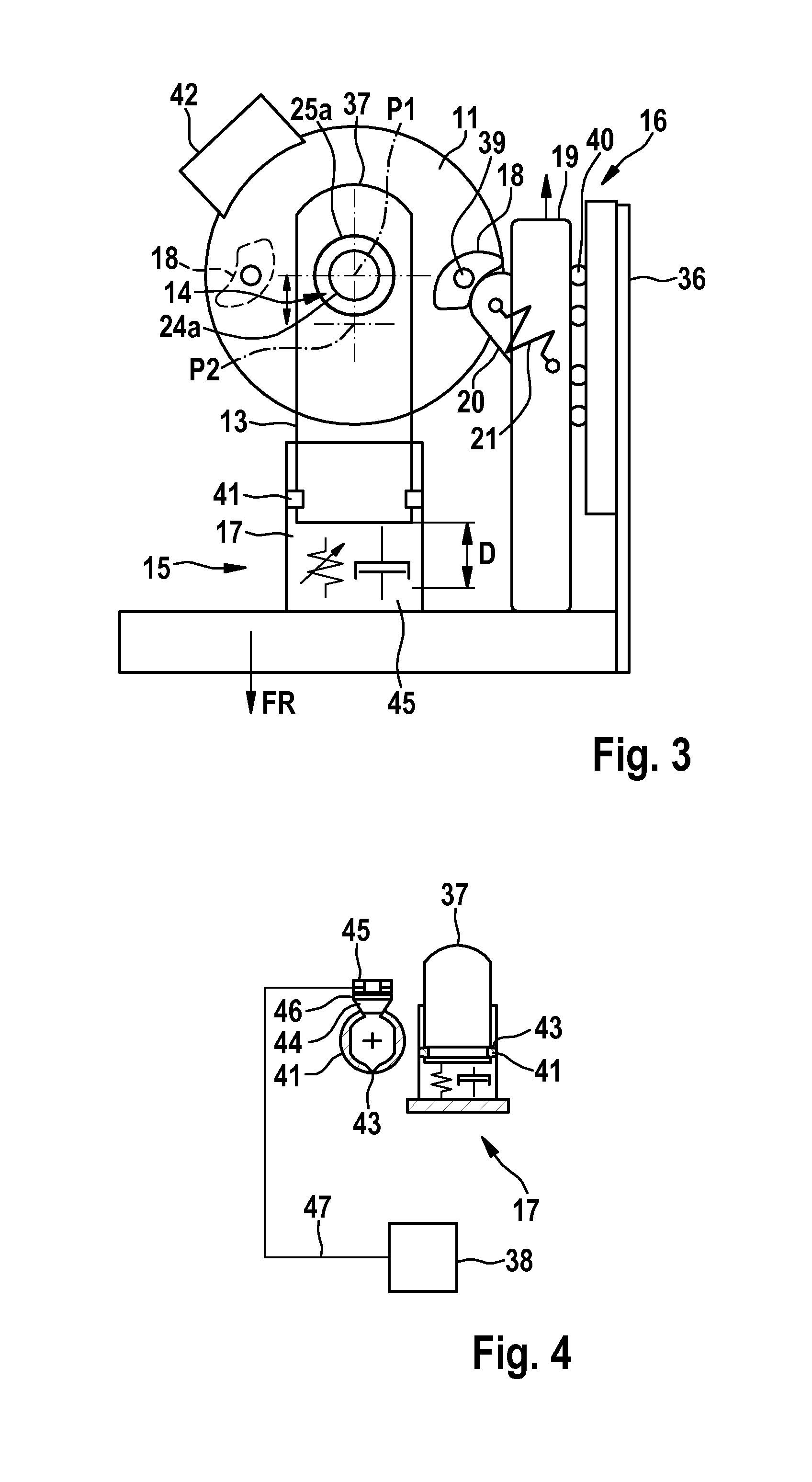Method and device for decoupling mass for a motor vehicle
- Summary
- Abstract
- Description
- Claims
- Application Information
AI Technical Summary
Benefits of technology
Problems solved by technology
Method used
Image
Examples
first embodiment
[0044]FIG. 1 shows a schematic depiction of a mass-receiving element and a mass object accommodated therein according to the invention.
[0045]The mass-receiving element 10 is configured plate-shaped, comprising an upper and lower plate, wherein the upper and lower plate each have a cylindrical shape in the present embodiment. The mass object 11 is disposed between the upper and lower plate of the mass-receiving element 10. In the present embodiment, the mass object 11 is designed in the shape of a cube. The mass-receiving element 10 and the mass object 11 are point symmetrically formed and have a common axis of rotation R. In the present exemplary embodiment, the mass-receiving element 10 is a battery carrier and the mass object 11 is a vehicle battery for driving an electrically or at least partially electrically operated motor vehicle. On an outer peripheral region of the upper plate of the mass-receiving element 10, a driver 18 is disposed in each case at positions lying opposite ...
second embodiment
[0072]FIG. 8 shows a top view of the mass-decoupling device for a motor vehicle according to the invention.
[0073]In FIG. 8, a second damping arrangement 61 according to a second embodiment is provided in addition to the first embodiment shown in FIG. 3. The second damping arrangement 61 is disposed opposite to the damping arrangement 17 at a position of the crash chamber which, in the longitudinal direction of the vehicle, is at the rear. Furthermore, additional energy-receiving means 16 are provided opposite to the second energy receiving means 16, said additional energy-receiving means having the same function as the energy-receiving means 16. The damping arrangement 61 and the energy-receiving means 70 enable a movement of the mass-receiving element 10 and the mass object 11 accommodated therein in the crash chamber along the longitudinal axis of the vehicle towards the rear of the motor vehicle. This is, for example, desirable in the event of a rear collision, in which accelerat...
third embodiment
[0074]FIG. 9 shows a cross-sectional view of the mass-decoupling device for a motor vehicle according to the invention.
[0075]In FIG. 9, a brake assembly is provided for decelerating the mass-receiving element 10 and the mass object 11 accommodated therein. A suction channel 62 is disposed in a peripheral region of the mass-receiving element 10. Said suction channel is described in greater detail with regard to FIG. 10.
[0076]FIG. 10 shows a longitudinal view of the mass-decoupling device for a motor vehicle according to the third embodiment of the invention.
[0077]A brake assembly 26 for decelerating the mass-receiving element 10 and the mass object 11 accommodated therein has a pneumatic brake element 27 and a plurality of mechanical brake elements 28a, 28b, 28c, 28d, 28e, 28f, 28g.
[0078]The pneumatic brake element 27 is designed to interact with the plurality of mechanical brake elements 28a, 28b, 28c, 28d, 28e, 28f, 28g by supplying an air flow in a channel 31 formed between an ou...
PUM
 Login to View More
Login to View More Abstract
Description
Claims
Application Information
 Login to View More
Login to View More - R&D
- Intellectual Property
- Life Sciences
- Materials
- Tech Scout
- Unparalleled Data Quality
- Higher Quality Content
- 60% Fewer Hallucinations
Browse by: Latest US Patents, China's latest patents, Technical Efficacy Thesaurus, Application Domain, Technology Topic, Popular Technical Reports.
© 2025 PatSnap. All rights reserved.Legal|Privacy policy|Modern Slavery Act Transparency Statement|Sitemap|About US| Contact US: help@patsnap.com



